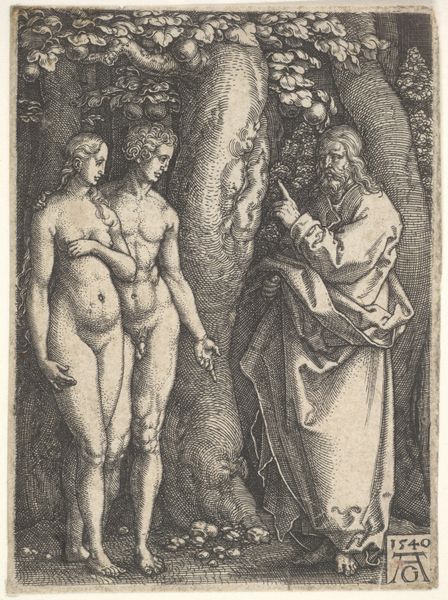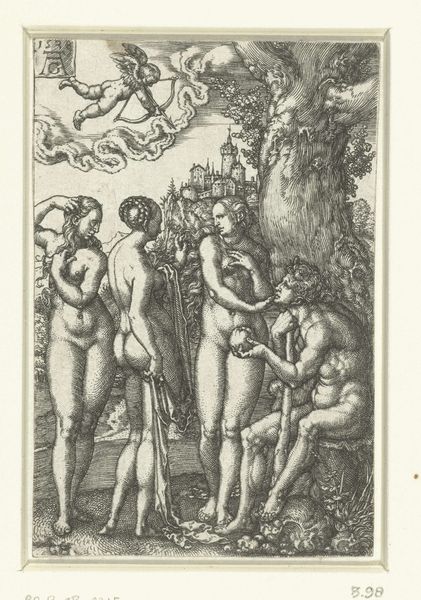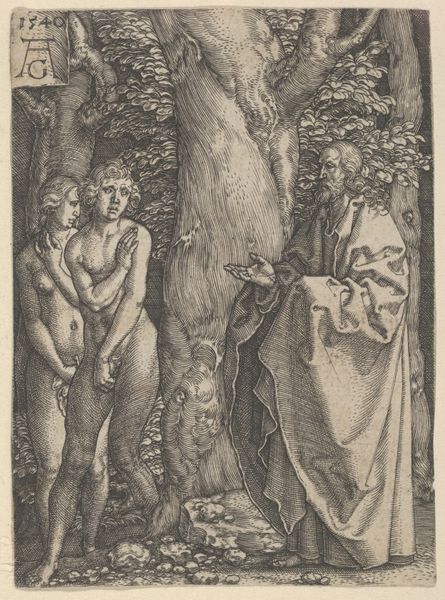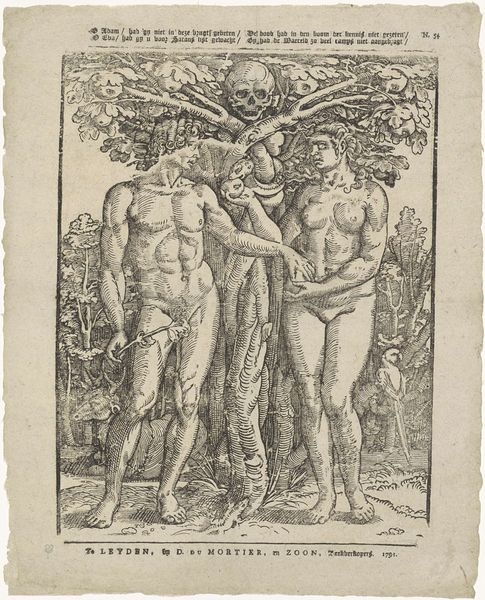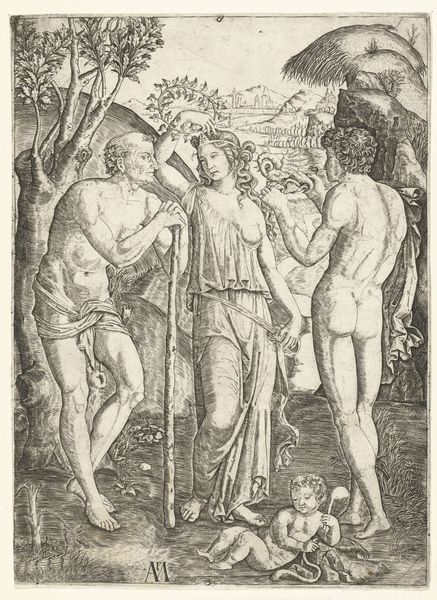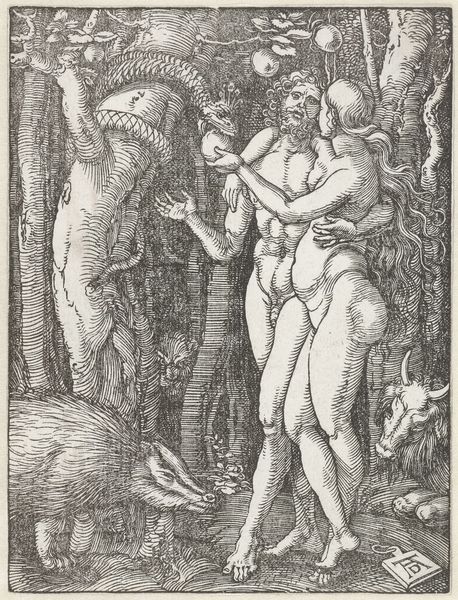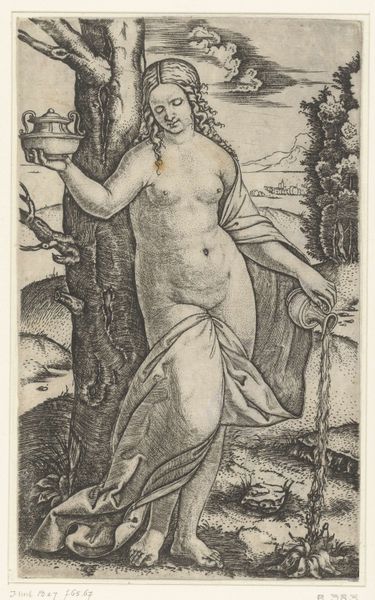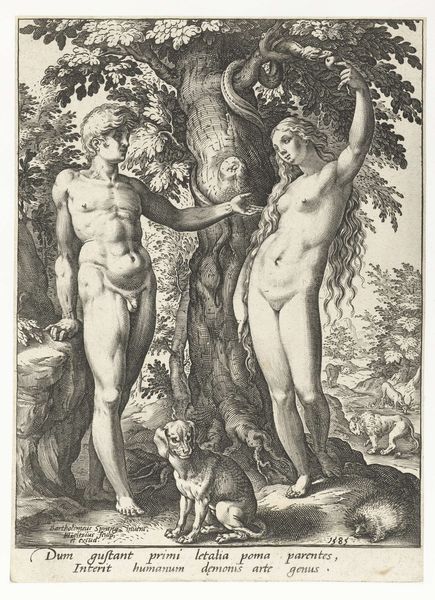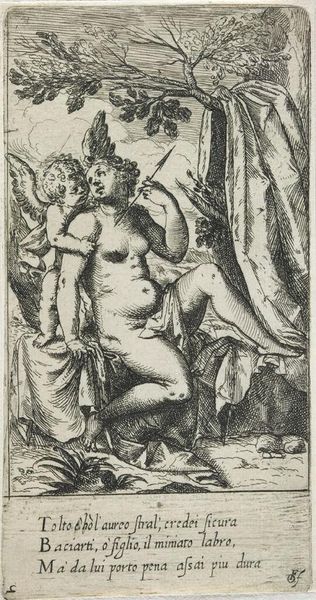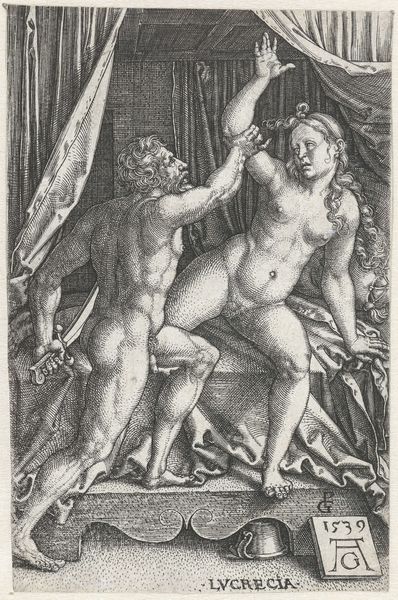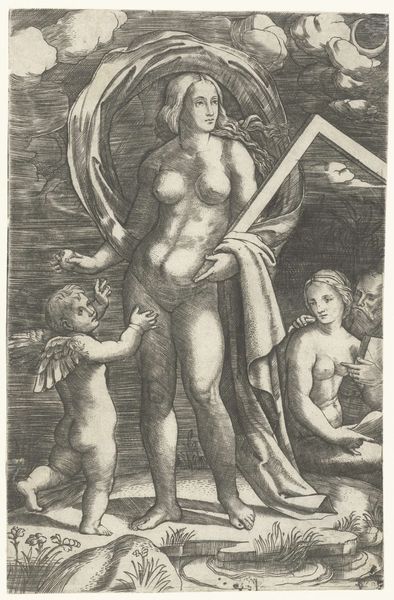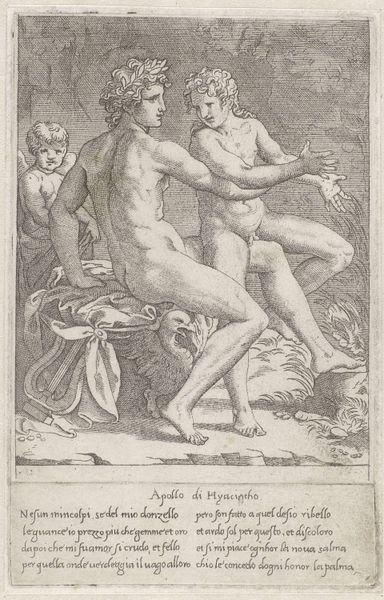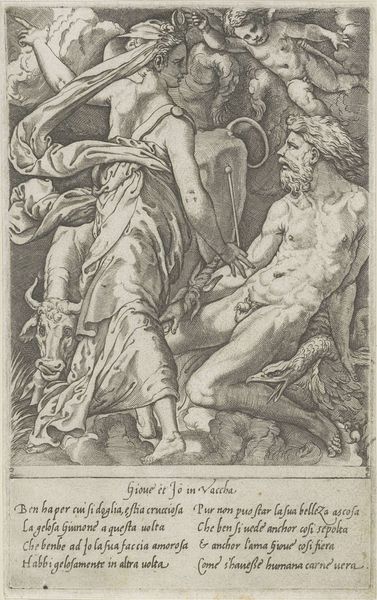
engraving
#
narrative-art
#
baroque
#
figuration
#
history-painting
#
engraving
Dimensions: height 85 mm, width 62 mm
Copyright: Rijks Museum: Open Domain
Curator: We're looking at "God Warns Adam and Eve," an engraving made in 1603 by an anonymous artist, currently held at the Rijksmuseum. Editor: Oh, the impending doom! You know, that's what I feel right off the bat. God, with his intense, judgmental expression, and these two standing there, blissfully unaware. You can almost hear the "Don't do it!" whisper coming from the tree itself. Curator: That tension you're sensing, I think it’s really heightened by the medium itself. Engravings in this era played a vital role in disseminating biblical narratives. It's as though it’s made for instruction and is less about individual expression, more about getting the story right, so the message, as you've felt, is pretty central to it all. Editor: Absolutely. The figure of God almost looms out of the left. Very didactic, you can tell this isn’t about playfulness or exploration but passing the message. Yet, what intrigues me is the depiction of Adam and Eve. Look at their postures – slightly intertwined, with subtle shading capturing a hint of human affection amidst their innocent unawareness. You know the artist tries to inject personality, but within this framework of good, evil and ultimate judgment. Curator: And while it's anonymous, it slots neatly into that broader Baroque fascination with morality tales. We can explore this piece in connection to other images that showcase temptation, disobedience and human frailties. But it’s that didactic feel we've been speaking about; for instance the body positions mirror that of the original Roman paintings and are designed to indicate the power structures. Editor: Right, there is so much storytelling compressed here. Even the contrast created by the crosshatching helps to build a real atmospheric sense of foreboding! That tree and those apples – even those have drama that the two innocents aren’t aware of. So how did audiences see something like this at the time? Curator: Prints such as these, were reproduced for wider circulation, often hand colored, reaching diverse audiences beyond elite circles, disseminating moral instruction throughout society and contributing to widespread understanding of scripture. Editor: It’s powerful. In just this small picture. Such is art. Curator: Exactly. It tells the whole story, doesn't it? And tells us so much more too!
Comments
No comments
Be the first to comment and join the conversation on the ultimate creative platform.
